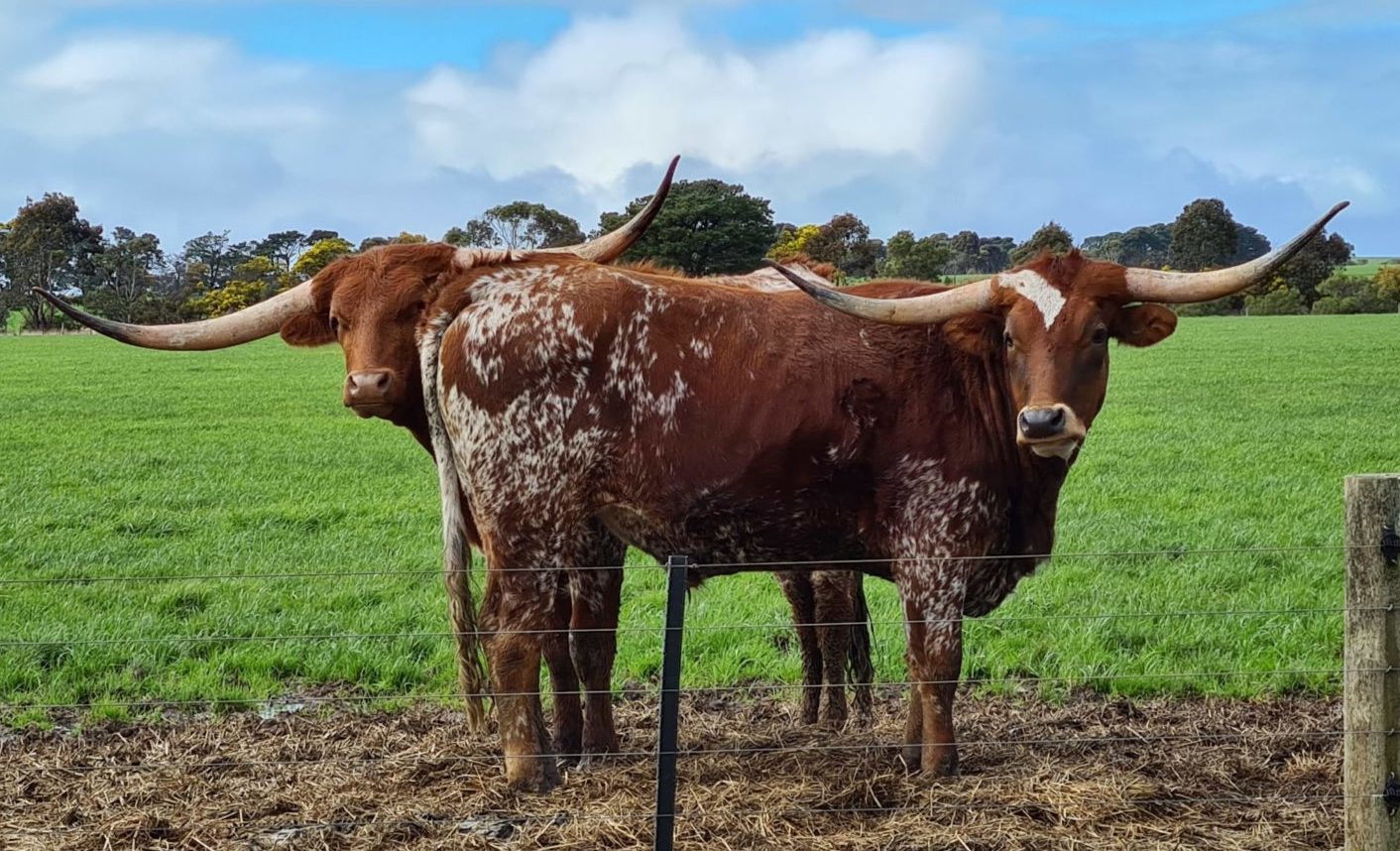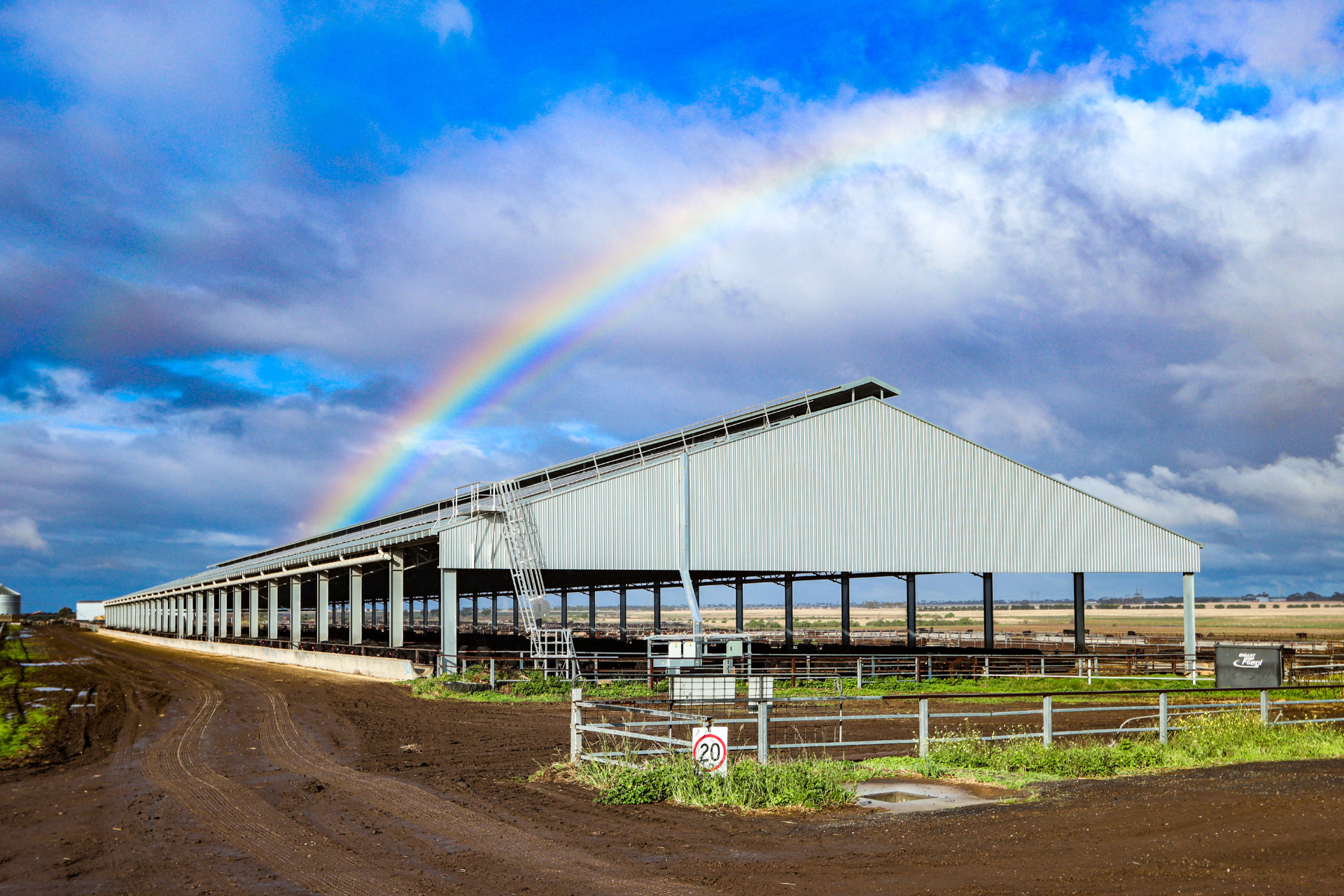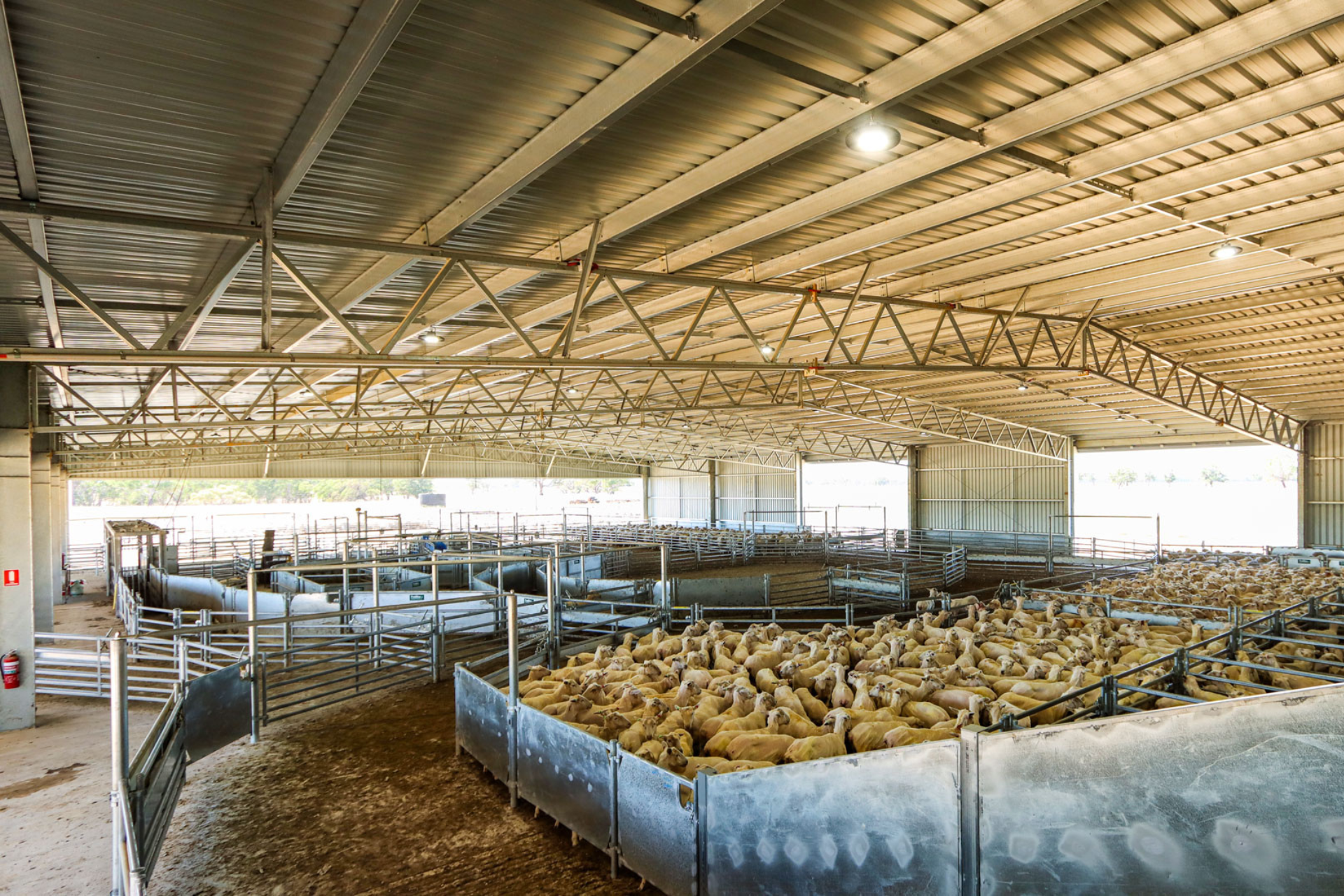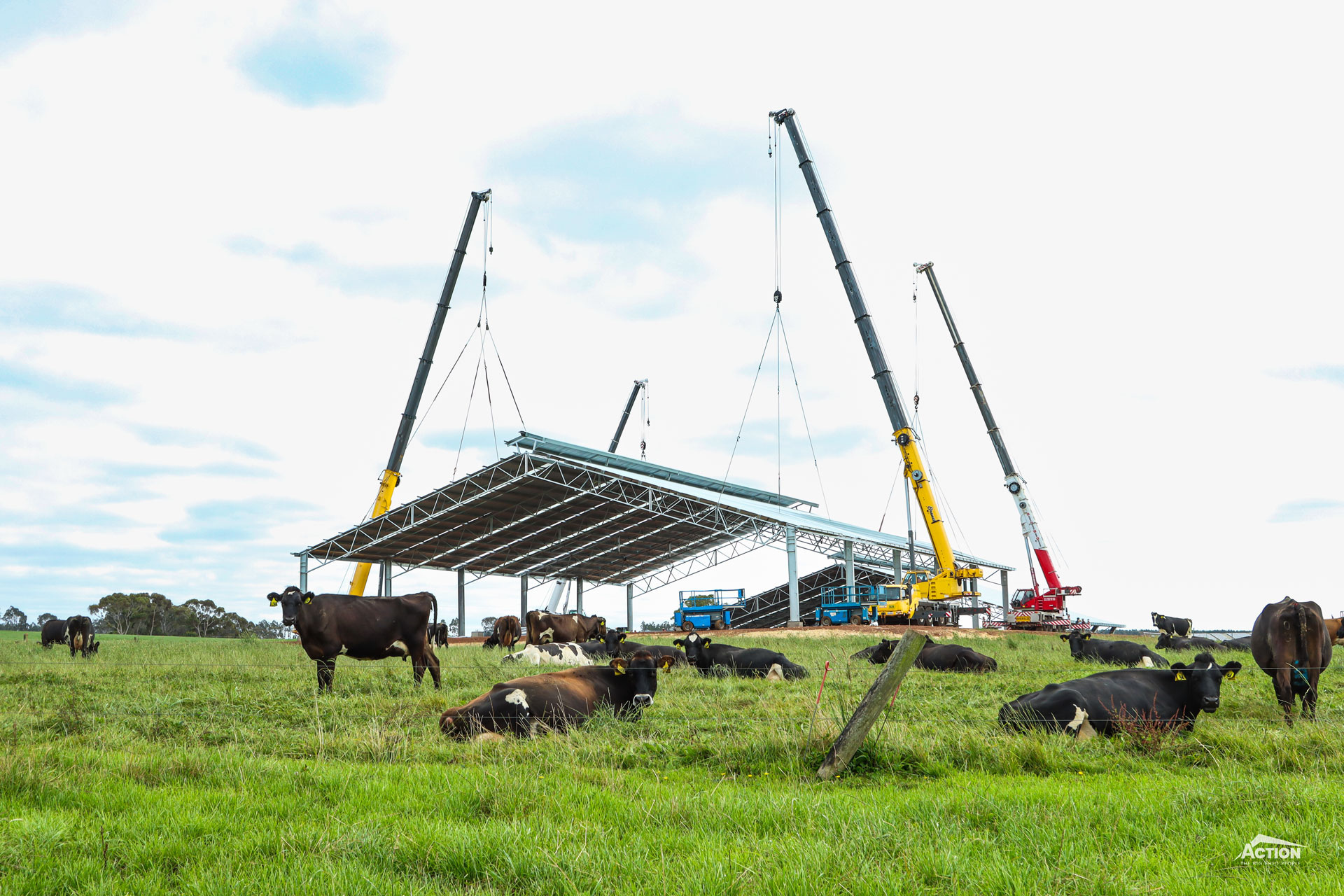Healthy cattle can tolerate a wide range of temperatures if they are acclimatised and have sufficient feed and water.
However, is is important to remember that some cattle are more vulnerable than others. And extreme weather conditions can impact an animals behaviour and health.
In this article we discuss some of the ways the weather can affect cattle and what you can do to minimise the impact on your livestock.
So, how does weather affect cattle?
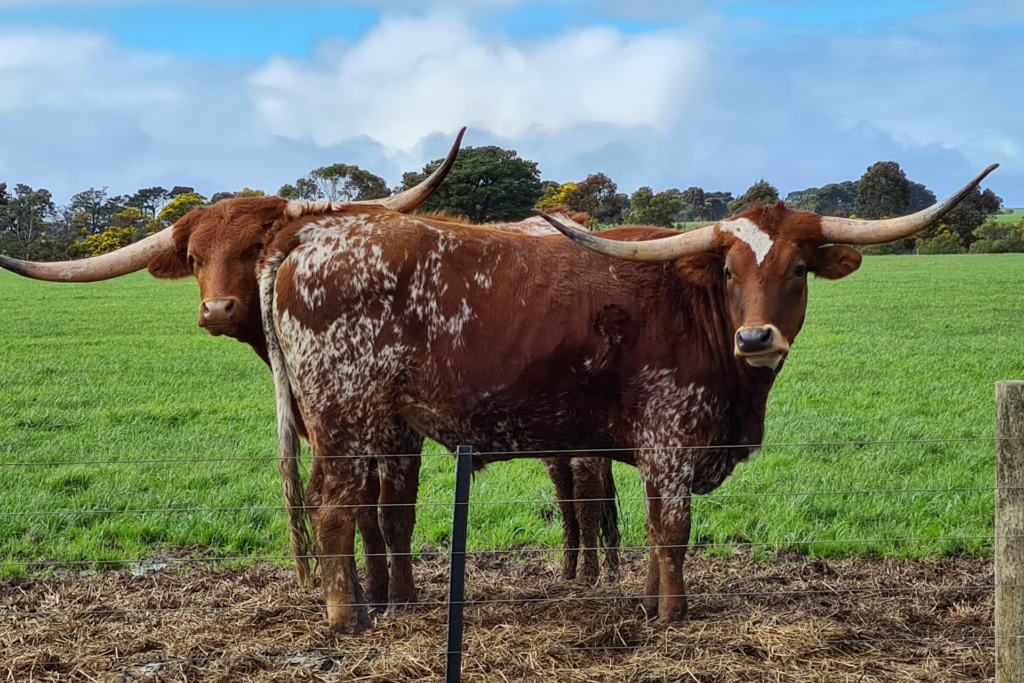
How The Weather Can Affect Cattle
Here are some of the main ways the weather can affect cattle:
The Affect Of Hot Weather On Cattle
- Cattle reach their ‘critical’ temperature when the temperature-humidity index (THI) gets above 82. At this point, substantial heat stress leads to factors like reduced appetite, decreased weight gain, loss in milk production, lower calf birth weights and higher calf mortality rates.
- High humidity reduces the ability of cattle to use evaporation to dissipate heat. This is the main way cattle cool themselves in temperatures above 21°C.
- “Like most mammals, the dairy cow needs to maintain its core body temperature between 38.6°C and 39.3°C.”
- When there are hot environmental conditions such as high temperatures disrupting night cooling or heat dispersal, cows will use both behavioural and physiological strategies to offload heat. Behavioural strategies include seeking water and shade, reducing or even stopping feed intake to decrease rumen heat production, and sweating or panting.
- Cows in hot environmental conditions will also respond with physiological changes. Although these are unseen they can have a significant impact on the health of the animal. These changes include rising core body temperatures, increased blood flow to the skin and decreased blood flow to internal organs.
The Affect Of Cold Weather On Cattle
- In Australia, hypothermia or cold stress is mainly a concern for new-born calves and occurs when body temperature is from about 37°C to less than 34°C but other at-risk cattle include calving cows or cattle that are sick or have low body condition.
- At 34°C body temperature, the calf’s processes and functions slow down, and blood is diverted to protect the vital organs. In these conditions, there are several implications including impaired brain function results.
- Cold stress has also been shown to decrease the rate of absorption of colostrum in newborn calves, compromising their immune system and potentially contributing to morbidity and mortality.
How To Minimise The Impact Of The Weather On Cattle
Cattle can adapt to short-term weather changes without a significant impact on health or performance, however, it is important not to ignore the impact of cold or heat stress.
While we can’t control the weather, there are several things we can do to ensure cattle are kept safe and healthy.
Here are 7 steps you can take:
1. Provide shelter
Providing shelter for your cattle is important for a number of reasons:
- Providing shelter in the heat allows cattle to be shaded from the direct sun, decreasing extra heat load and therefore decreasing the likelihood or severity of heat stress.
- When sheltered from extreme weather events, cattle do not need to expend extra energy simply to maintain a stable core body temperature.
- Providing shelter for cattle in above or below average temperatures can prevent suffering and loss of life of cattle.
- Shelter can improve the health of cattle as they can better cope with climatic extremes. This increases productivity as cattle perform better overall, helping maximise return on investment. A study “found that milk production was three per cent greater for shaded cows than for unshaded cows.”
Shelter could include simple tree canopies, shelterbelts, windbreak, temporary shelter like shade cloth or permanent structured like loafing barns, calving shelters, feedlot covers and yard covers. Having your cattle yards undercover also means that you too can work sheltered from the weather.
The best type of shelter during extreme heat protects cattle from the sun and allows for the cooling effect of the wind.
The amount of shelter provided should be sufficient so all cattle can access it at the same time. Plan the placement of shelter and water so that it does not result in cattle camping around the water source, causing overcrowding and preventing access to the water.
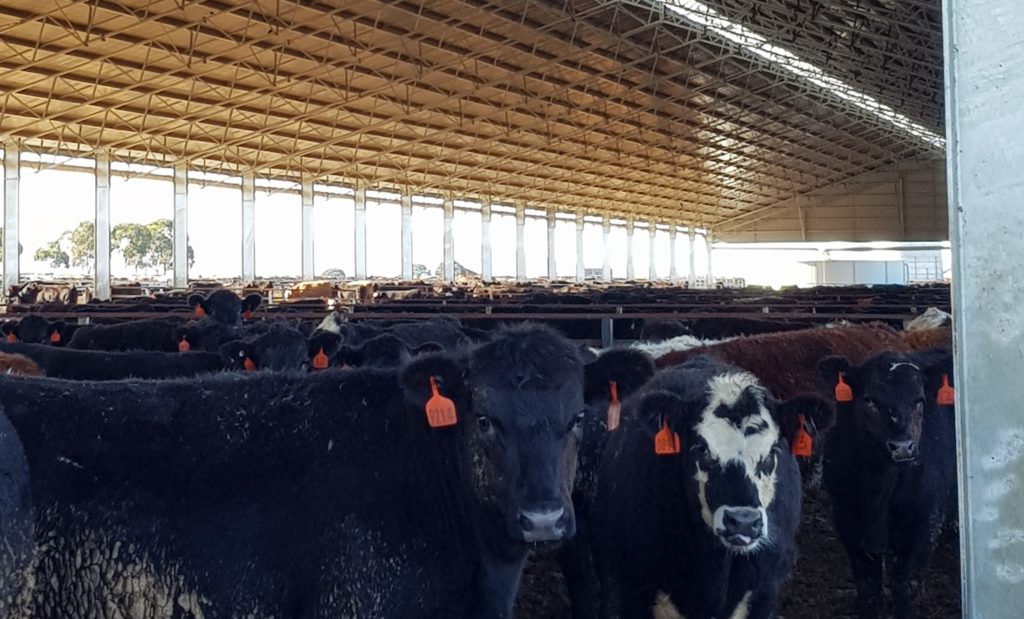
Prioritise shelter by keeping in mind the cattle that will need shelter the most:
- Calves
- Cattle showing signs of photosensitivity (sunburn)
- Cattle that are not acclimatised
- Cattle that have a history of respiratory disease
- Dark coloured cattle
- High producing dairy cows
- Injured cattle
- Over fat stock
- Pregnant cows
Provide shelter for your cattle during extreme heat that allows for the cooling effect of the wind.
Action Steel Click to Tweet
Animals in poor condition are especially vulnerable to the extremes of weather. Ideally, they should be housed separately from the main herd to ensure that have access to shelter, feed and any needed treatment.
2. Provide good quality feed and water
In hot weather, provision of good quality feed and water will assist in maintaining normal feed intakes and reduce the heat load of the cattle.
What cattle eat plays a role in managing heat stress, for example, the excess nitrogen in high protein feed must be removed, using energy and creating heat. High-quality feed produces less heat during rumen fermentation.
There should also be enough water near the shelter for all cattle to access.
3. Implement feeding and grazing strategies
Timing of feeding can make a difference to how cattle cope with heat stress. Try to adjust feeding times so that the heat of digestion occurs in the cooler night temperatures.
Grazing strategies could involve rotation of cattle through paddocks more regularly as longer grass acts as a cooler surface.
4. Provide additional minerals
Increased water intake by cattle during the warmer weather, means a loss of minerals such as sodium, magnesium and potassium via excretion. To replace the lost minerals, trace mineral salt or similar should be available for cattle to consume.
Lose salt is often a better option that blocks as it is more readily consumed and should be placed in a familiar location.
5. Pre-conditioning programs
Implement pre-conditioning programs for calves. Meat Animal Research Centre (MARC) research has shown that cattle treated for pneumonia have a 10.5% higher respiration rate under stressful conditions than those untreated.
We hope that these tips and suggestions help you with your cattle heat load management. Download our dairy and feedlot guide and visit the ALFA Shade Hub for more shade and shelter ideas.
6. Observe and plan
Closely observe cattle in extreme weather to monitor signs of heat or cold stress. It is better to be prepared ahead of time to combat extreme weather rather than reacting after, so have a plan in place when signs are noticed and stay aware of forecasted weather conditions
7. Use sprinklers and water to cool cattle
Heat stress in cattle standing in holding yards or feedlots can be reduced with the use of water, such as installing sprinklers on the roof. Make sure that using sprinklers does not increase the humidity or mud in the yards.
We hope you have found this article informative! Here are some other articles that might be helpful:
- How Much Does It Cost To Cover Cattle Yards?
- Do Cattle Need Shade?
- Common Cattle Sicknesses & What To Do About Them
Or check out our Learning Hub for the latest farm articles, brochures and videos.

